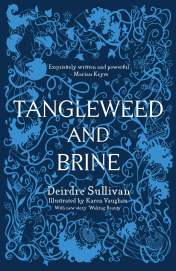 Today on the blog, a little something different: a tarot reading! In this guest post in celebration of the paperback release of her acclaimed fairytale retelling collection Tangleweed and Brine (pictured in its inky Sunday best here), fabulous writer and (tarot) reader Deirdre Sullivan agreed to take a look at her beautiful cards for a very timely purpose.
Today on the blog, a little something different: a tarot reading! In this guest post in celebration of the paperback release of her acclaimed fairytale retelling collection Tangleweed and Brine (pictured in its inky Sunday best here), fabulous writer and (tarot) reader Deirdre Sullivan agreed to take a look at her beautiful cards for a very timely purpose.
If you’re feeling stuck with National Novel Writing Month, maybe it’s time to see if the cards have any guidance for you…
—
NaNoWriMo is upon us and, while I’m not participating this year, I’m very fond of it. Needlework (Little Island, 2016) was a NaNoWriMo book, as was Perfectly Preventable Deaths (out in June 2019 from Hot Key). While both of those books needed considerable redrafting before they were ready to share with people, the power of letting yourself be consumed by story for a month is something I found really liberating and satisfying.
A tool I use in my creative writing workshops and in my own practice is the tarot. For me, the tarot is largely a tool for self-reflection. I use it to tap into my own intuition. The seventy-eight cards represent different facets and truths of the human experience, and can work extremely well for a writer stuck on character development, or a story’s narrative arc.
For my reading today, I chose the Tattoo Tarot by Diana McMahon Collis and Megamunden. I like the design of this deck a lot, but I bought it mainly to use as a resource for workshop exercises. I’m going to do a simple four card spread, which I like because it’s very no nonsense – it has helped me to give myself a bit of tough love in recent times, as deadlines loomed and I needed to get the head down. Here goes!
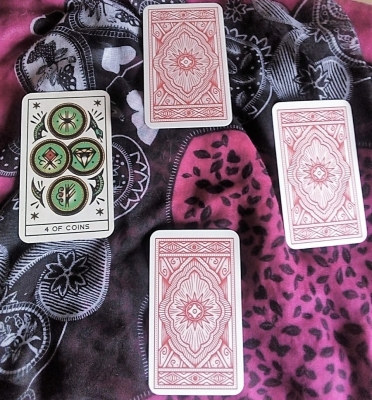
Card One: It deals with this.
Four of Pentacles is a card usually to do with money, and control. Pentacles is earth. Four as a number is generally to do with stability and structure. 1,167 words of structure a day, to be precise.
Participating in NaNoWriMo is exerting that control – that discipline over yourself in pursuit of a tangible achievement, something you can touch. It’s turning something in your head into something on the page. Hoarding words like gold coins until you hit that target. A singular focus, and the sacrifices that implies.
There are things you will have to say no to this month, experiences you’ll have to forgo in favour of spending time with the people in your brain. Will it be worth it?
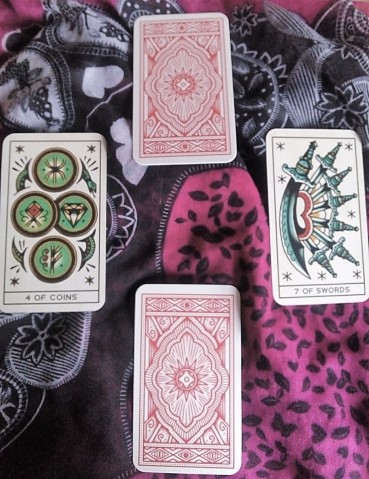
Card Two: Don’t do this.
The Seven of Swords. This is a card of warning, and my lucky number – seven. This can be the number of imbalance on the journey, a twist in the road where you need to pause and ask for directions. But NaNoWriMo is not a pausing time. Swords as a suit represent air, the intellectual.
What all these knives are saying to me, is don’t stop to edit your work. Just keep going. You can be brutal later, when you have a draft to fix. Don’t stop and count all the problems with your writing, all the swords thrust into your soft, growing heart. Of course there will be problems with it, things to fix, but it’s still worth your time right now.
Write with your heart, not with a scalpel. Get to 50,000. Have a nap.
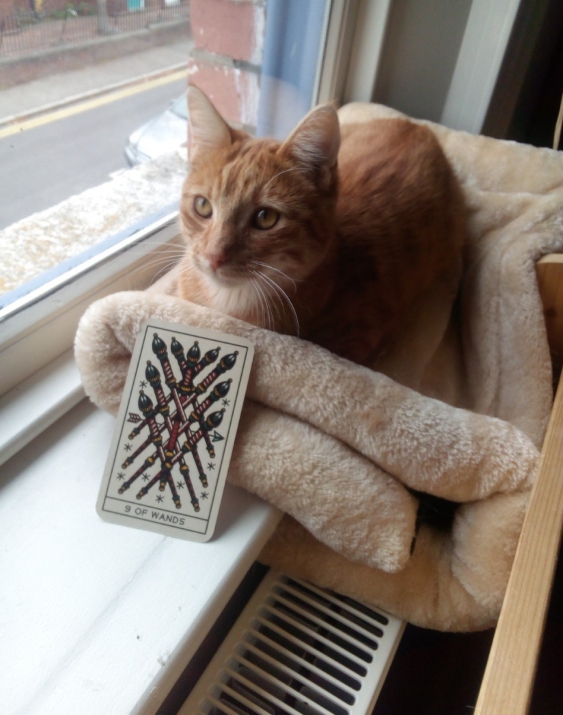
Card Three: Do this.
Nine of Wands. Wands are the suit of fire, of urgency and passion. They are your fingers banging against the keyboard, tattooing out a rhythm while you live the words you write. Nine is the number of hanging in there. Of almost.
You will need to move quickly during NaNoWriMo: there will be obstacles, days when you don’t get the chance to write for as long or as much as you want to, evenings when your characters won’t behave or your brain can’t work out how to fix a plot hole. During NaNoWriMo there’s a lot to be said for leaving it and moving on to the next thing. Nothing wrong with just typing IMPORTANT CONVERSATION THAT CHANGES EVERYTHING GOES HERE, and then writing the next thing.
It doesn’t have to be perfect yet, it just has to be. Also, this can be a card of recovery, so don’t forget to back your work up every single day.
Card Four: It leads to this.
The Ace of Cups. An actual golden trophy. Kind of on the nose. I LOVE this card.
It’s a card of creativity and imagination, of beginnings. Literally brimming with potential and satisfaction. This is what having a first draft down gives you. You have written a book. Now, all you have to do is make it better, or write the next one. Once you have done the thing, you know that you can do it again and again. Your cup is full, the sun is shining, there’s two little bird dudes basking in the glory of it.
It feels good, when you hit that 50K.
It feels like an achievement.
And it is.
——
If you like the idea of using tarot for creative purposes, there are plenty of spreads and blog posts available to look at online (I love Little Red Tarot and Biddy Tarot!). Book-wise it’s worth having a look at Jessa Crispin’s The Creative Tarot, which marries tarot and developing a piece of work really nicely. I also like Tarot Plain and Simple by Anthony Louis, and The Tarot Dictionary by Jana Riley for reference.
Happy NaNoWriMo, and if you don’t hit that target, it’s not the end of the world. Tangleweed and Brine is only 26,000 words long. It takes the space it takes to tell a story.
Best of luck.
 Deirdre Sullivan is an award-winning writer from Galway, Ireland. Her young adult novel Needlework won the Honour Award for Fiction at the Children’s Books Ireland Awards and was shortlisted for the Irish Book Awards. Her Primrose Leary series was also widely acclaimed; two of the Prim books were shortlisted for the Children’s Books Ireland awards, while the third, Primperfect, was shortlisted for the European Prize for Literature.
Deirdre Sullivan is an award-winning writer from Galway, Ireland. Her young adult novel Needlework won the Honour Award for Fiction at the Children’s Books Ireland Awards and was shortlisted for the Irish Book Awards. Her Primrose Leary series was also widely acclaimed; two of the Prim books were shortlisted for the Children’s Books Ireland awards, while the third, Primperfect, was shortlisted for the European Prize for Literature.
Deirdre also writes short fiction and poetry, which has been published in places like The Penny Dreadful and The Dublin Review. When Deirdre is not writing she is a reader and a guinea pig enthusiast, and shares her home with a very important cat named Arthur Conan Doyle.






 Natasha Ngan is a writer and yoga teacher. She grew up between Malaysia, where the Chinese side of her family is from, and the UK. This multicultural upbringing continues to influence her writing; she is passionate about bringing diverse stories to teens. Natasha studied Geography at the University of Cambridge before working as a social media consultant and fashion blogger. She recently moved to Paris, where she likes to imagine she drifts stylishly from brasserie to brasserie, notepad in one hand, wineglass in the other. In reality, she spends most of her time getting lost on the metro and confusing locals with her French.
Natasha Ngan is a writer and yoga teacher. She grew up between Malaysia, where the Chinese side of her family is from, and the UK. This multicultural upbringing continues to influence her writing; she is passionate about bringing diverse stories to teens. Natasha studied Geography at the University of Cambridge before working as a social media consultant and fashion blogger. She recently moved to Paris, where she likes to imagine she drifts stylishly from brasserie to brasserie, notepad in one hand, wineglass in the other. In reality, she spends most of her time getting lost on the metro and confusing locals with her French.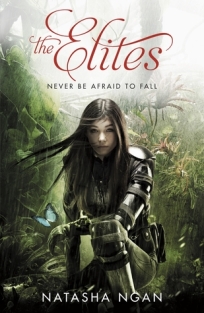 1. Girls of Paper and Fire is the start of a new series. What makes this book different from your previous books (The Elites and The Memory Keepers)?
1. Girls of Paper and Fire is the start of a new series. What makes this book different from your previous books (The Elites and The Memory Keepers)?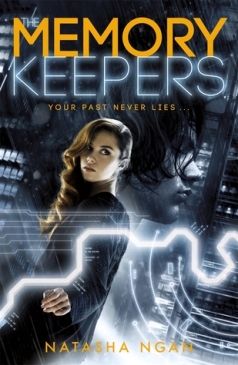 3. By the time Girls of Paper and Fire releases, it will have been four years since your last book was published. What do you feel you’ve learned about writing in that time?
3. By the time Girls of Paper and Fire releases, it will have been four years since your last book was published. What do you feel you’ve learned about writing in that time?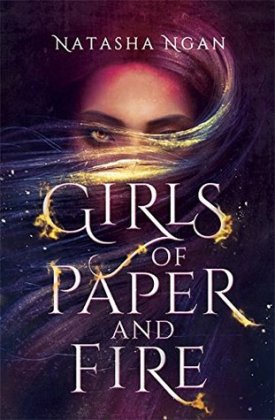 Each year, eight beautiful girls are chosen as Paper Girls to serve the king. It’s the highest honor they could hope for… and the most cruel.
Each year, eight beautiful girls are chosen as Paper Girls to serve the king. It’s the highest honor they could hope for… and the most cruel.
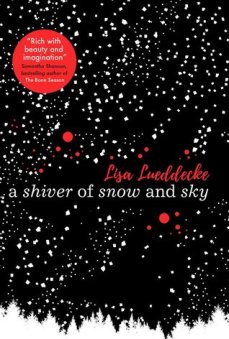 2. If you’re stuck, make things as straightforward as possible
2. If you’re stuck, make things as straightforward as possible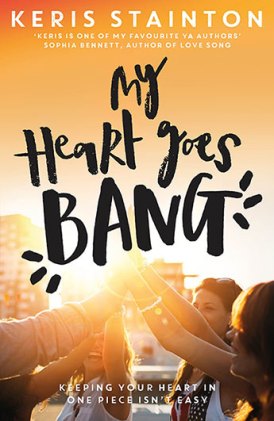 Everyone has hallmarks. I finish all my reviews with a short in-brief paragraph, string multiple adjectives together at the start or end of sentences, have a terrible propensity for alliteration, and find comp titles (specific ‘for fans of’ descriptions) very useful (“For fans of Sky Chasers by Emma Carroll and The Boy Who Went Magic by A.P. Winter, Vashti Hardy’s
Everyone has hallmarks. I finish all my reviews with a short in-brief paragraph, string multiple adjectives together at the start or end of sentences, have a terrible propensity for alliteration, and find comp titles (specific ‘for fans of’ descriptions) very useful (“For fans of Sky Chasers by Emma Carroll and The Boy Who Went Magic by A.P. Winter, Vashti Hardy’s 
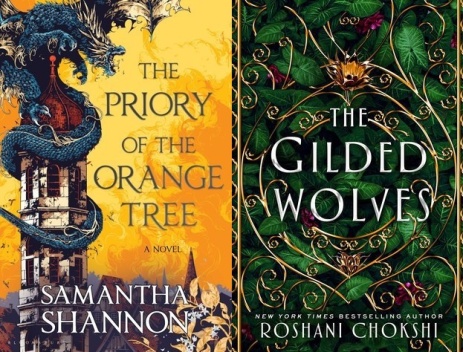
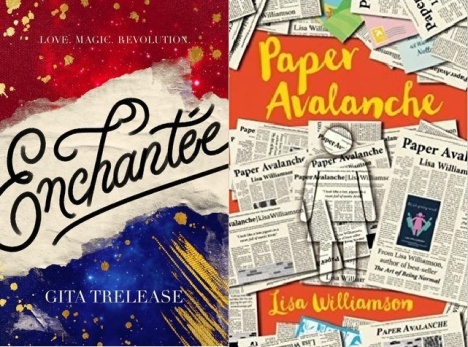
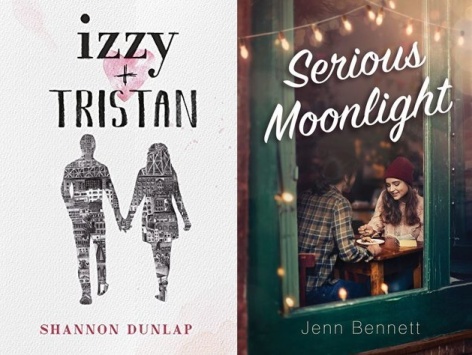


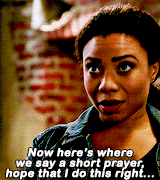
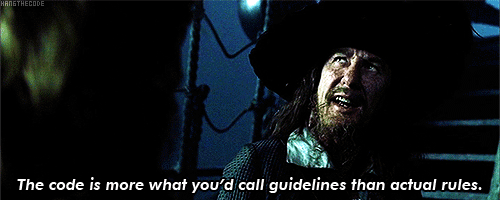
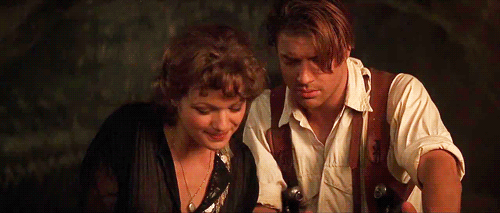

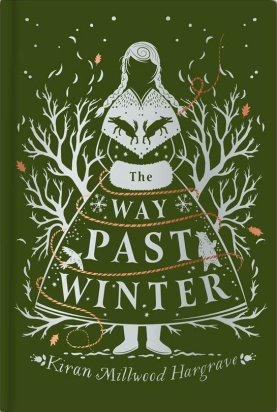 Author(s): Kiran Millwood Hargrave
Author(s): Kiran Millwood Hargrave

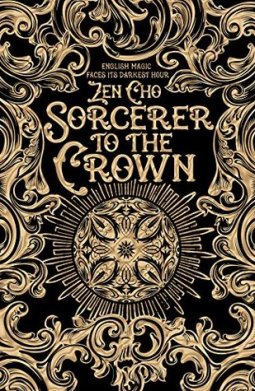 Author(s): Zen Cho
Author(s): Zen Cho

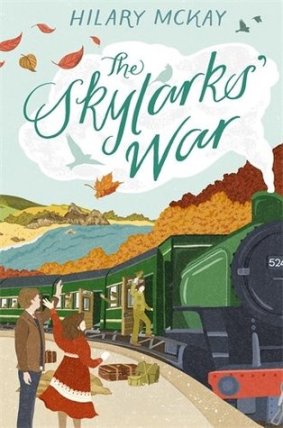 Author(s): Hilary McKay
Author(s): Hilary McKay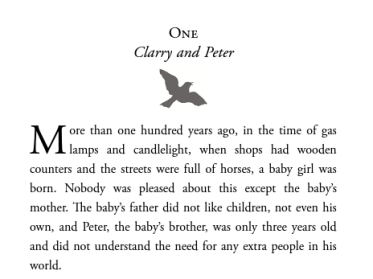


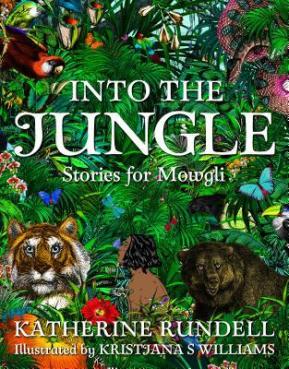 Author(s): Katherine Rundell
Author(s): Katherine Rundell

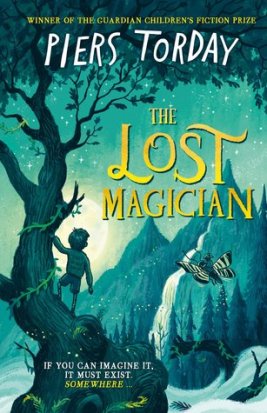 Author(s): Piers Torday
Author(s): Piers Torday
